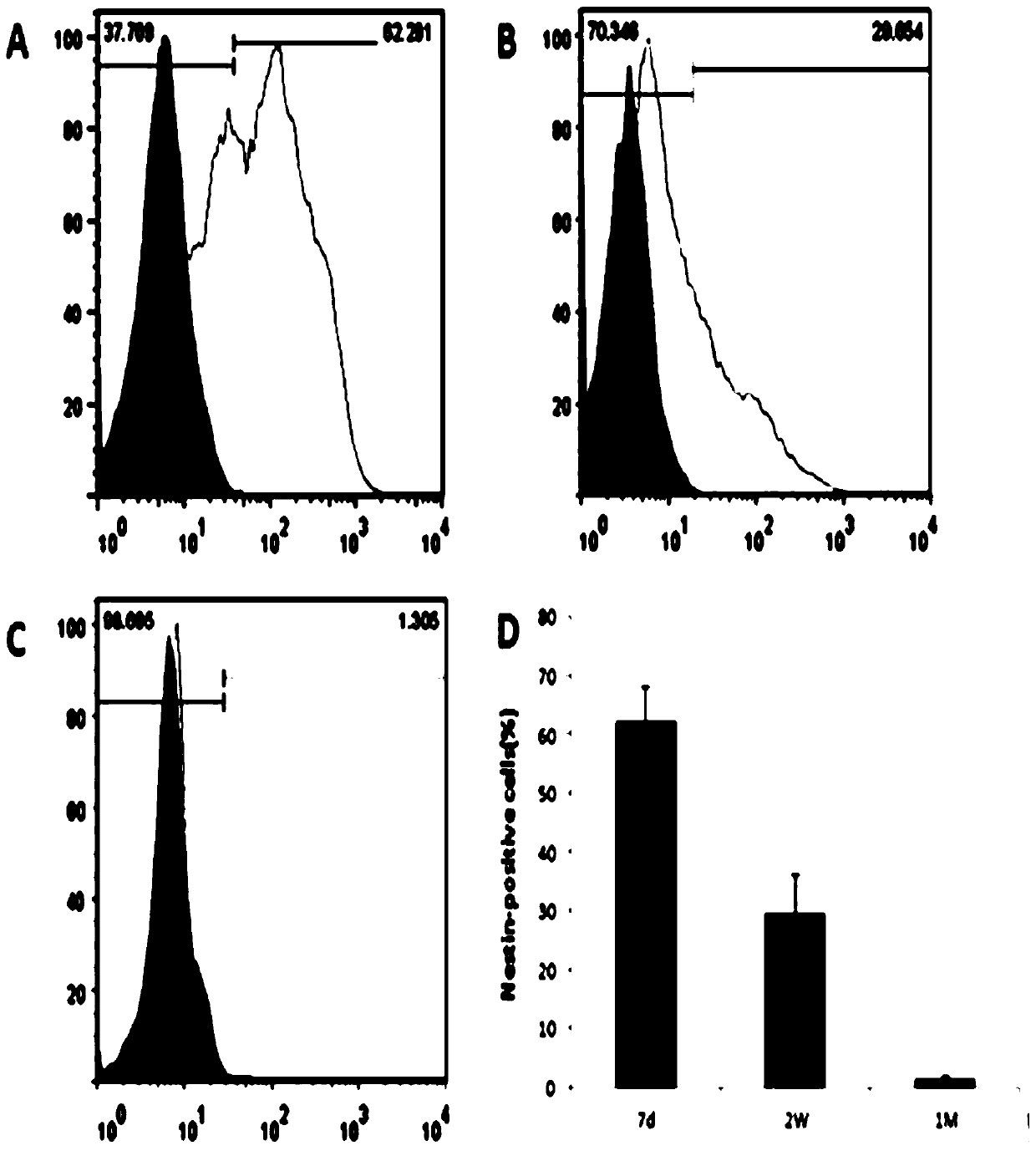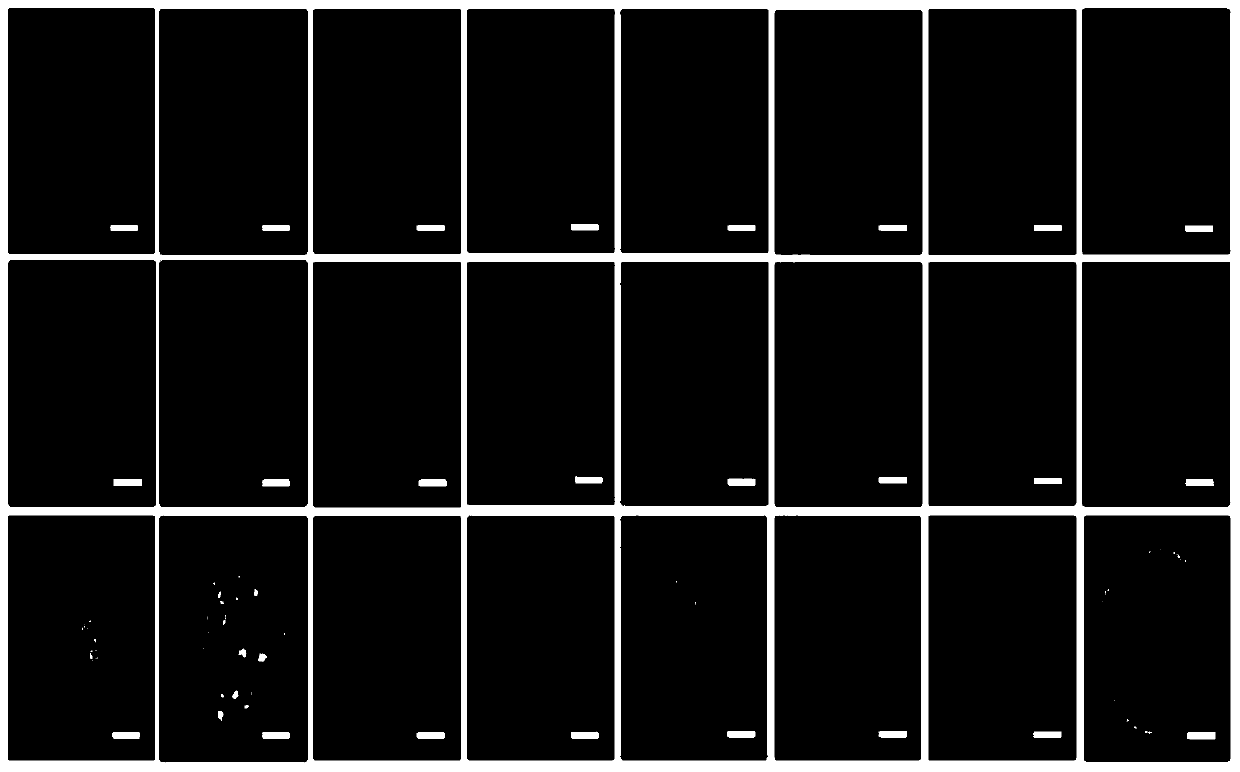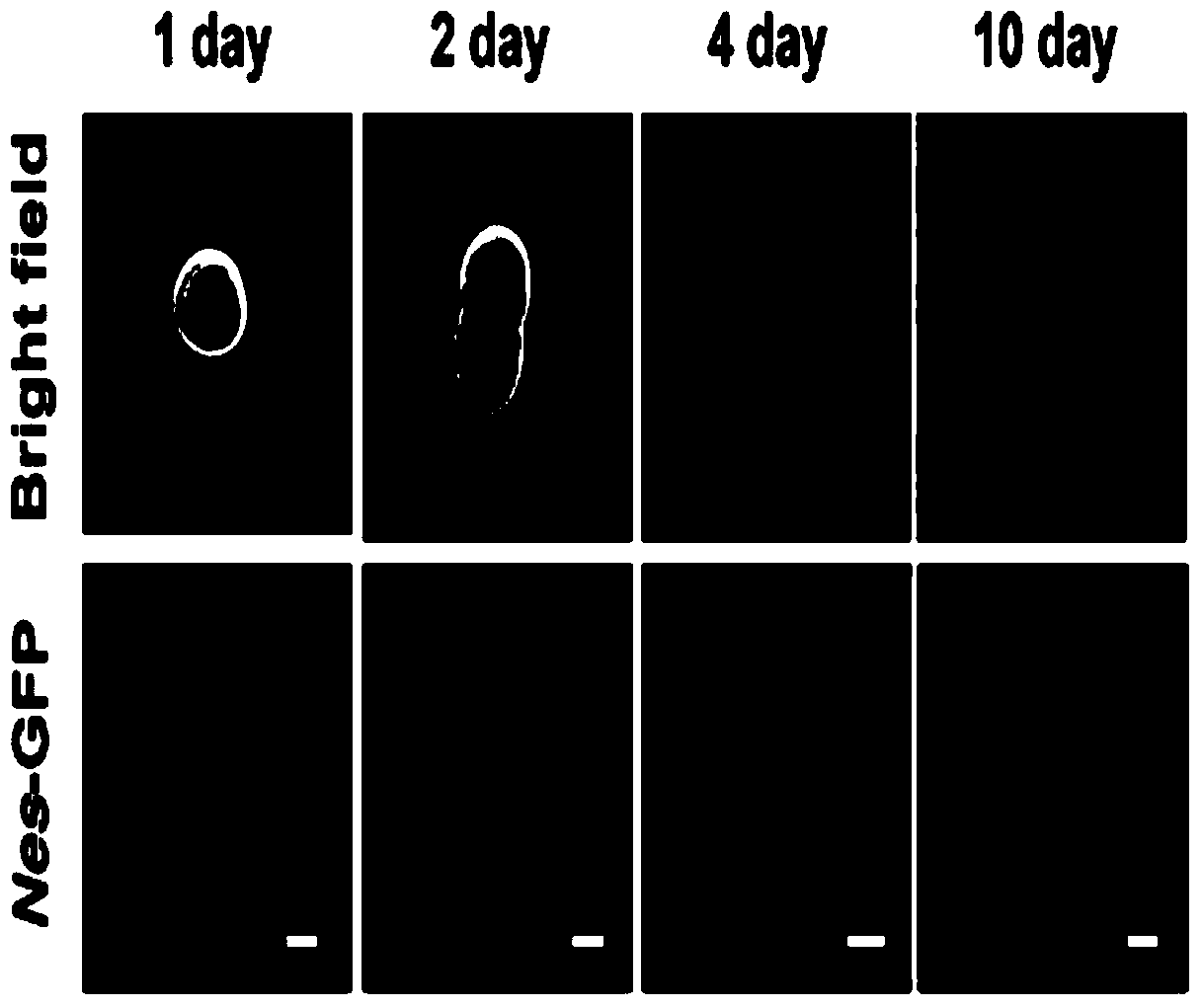Separation and culture method of testicular mesenchymal stem cells for expressing nidogen and application of testicular mesenchymal stem cells
A testicular interstitial, separation method technology, applied in the direction of cells modified by introducing foreign genetic material, medical preparations containing active ingredients, pharmaceutical formulations, etc. And other issues
- Summary
- Abstract
- Description
- Claims
- Application Information
AI Technical Summary
Problems solved by technology
Method used
Image
Examples
Embodiment 1
[0029] Example 1: Isolation of Nestin-positive Leydig cells from mouse adults
[0030] In this example, testicular mesenchymal stem cells expressing Nestin were isolated from mouse adult testes.
[0031] Selection of Nestin-GFP mice: The transgenic mice used in this experiment were from the specific marker Nestin-GFP transgenic mouse model (Yamaguchi M, Saito H , Suzuki M, Mori K. Visualization of neurogenesis in the central nervous system using nestin promoter-GFP transgenic mice. Neuroreport 2000.11:1991-1996). However, other Nestin-GFP mice can also be used, and their common characteristics are: a plasmid that expresses GFP driven by a Nestin promoter, and the promoter region including the upstream translation site is 2.5kb long and contains the second exon The enhancer region from 3' to the 5' of the third intron is 1.8kb long, and the polyadenylation site is connected with enhanced GFP (EGFP) cDNA.
[0032] The present invention utilizes the research of the animal model...
Embodiment 2
[0037] Example 2: Identification of nestin-positive testicular mesenchymal stem cells self-renewal and proliferation ability
[0038] In this example, on the basis of Example 1, the self-renewal and proliferation abilities of the obtained nestin-positive testicular mesenchymal stem cells were identified.
[0039] a. Identification of the self-renewal ability of nestin-positive testicular stromal stem cells:
[0040] Single nestin-positive cells sorted from mouse adult testes were placed in each single well of a 6-well plate for culture. The components of the culture medium include ITS added with 1nM dexamethasone, 1ng / ml LIF, 5mg / liter insulin, 5mg / litertransferrin, 5ug / liter sodium selenite in DMEM-F12 medium, 5% chicken embryo extract, 0.1mM β-mercaptoethanol , 1% non-essential amino acids, 1% N2, 2% B27 (Gibco), 20ng / ml bFGF, 20ng / ml EGF, 20ng / ml PDGFBB, 20ng / ml OSM. In the above medium, the sorted primary cells grow adherently. Passage after 7 days, form spherical growt...
Embodiment 3
[0047] Example 3: Observing the role of nestin-positive testicular mesenchymal stem cells in tissue repair in vivo
[0048] a. Establishment of rat EDS model:
[0049]The ability of stem cells to regenerate damaged tissues in the body is an important feature. Therefore, we investigated whether nestin-positive Leydig stem cells could promote functional recovery of Leydig cells in a rat model of Leydig cell loss. Previous studies have shown that the cytotoxin ethane dimethylesulfonate (EDS) may deplete Leydig cells after 4 days of treatment. We selected three groups of adult rats, which were normal group, model group and cell group. Rats in the model group and the cell group were inoculated with EDS, and 4 days later, PKH26-labeled 1x10 6 Nestin-positive Leydig stem cells were infused into the testicular parenchyma. Serum testosterone concentrations were measured on day 10 of transplantation. Figure 8 showed that nestin-positive testicular mesenchymal stem cell transplanta...
PUM
 Login to View More
Login to View More Abstract
Description
Claims
Application Information
 Login to View More
Login to View More - R&D Engineer
- R&D Manager
- IP Professional
- Industry Leading Data Capabilities
- Powerful AI technology
- Patent DNA Extraction
Browse by: Latest US Patents, China's latest patents, Technical Efficacy Thesaurus, Application Domain, Technology Topic, Popular Technical Reports.
© 2024 PatSnap. All rights reserved.Legal|Privacy policy|Modern Slavery Act Transparency Statement|Sitemap|About US| Contact US: help@patsnap.com










